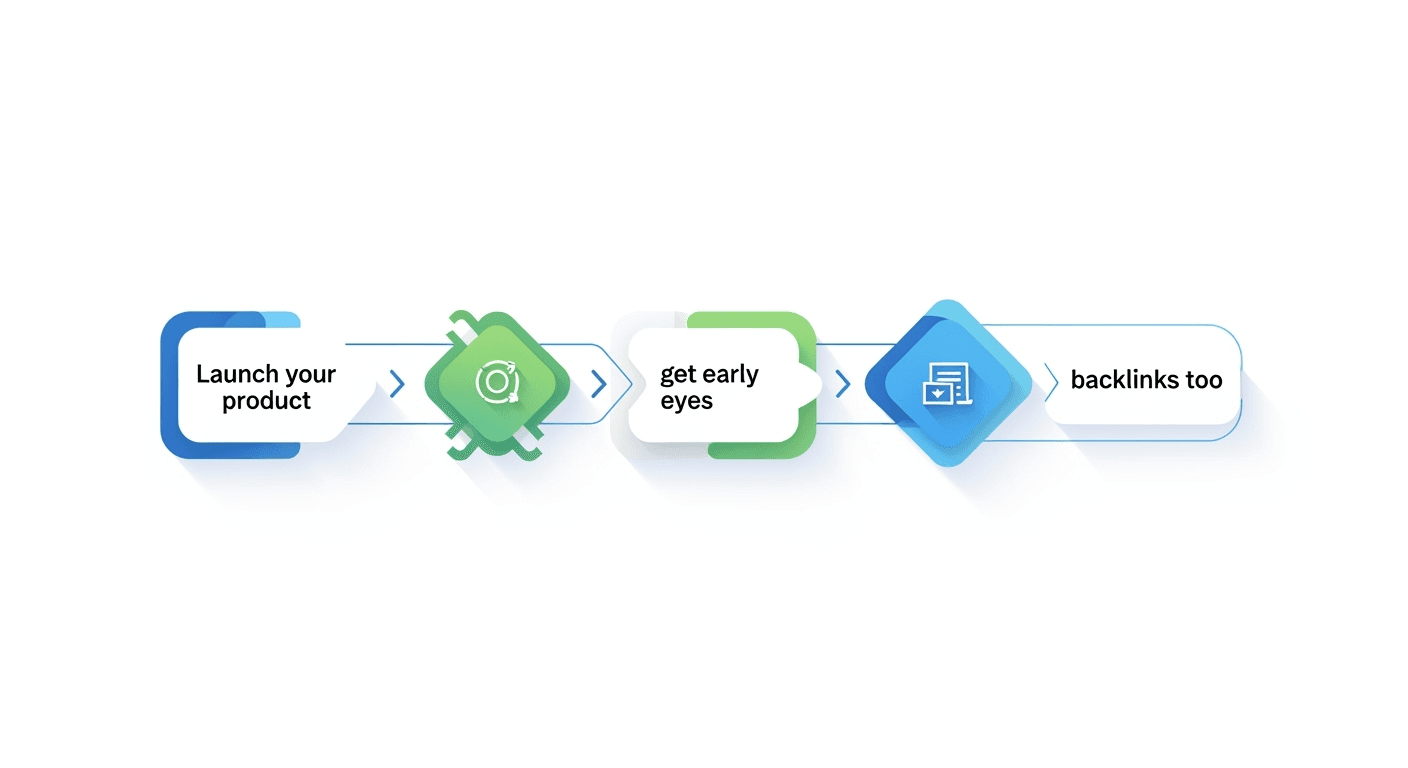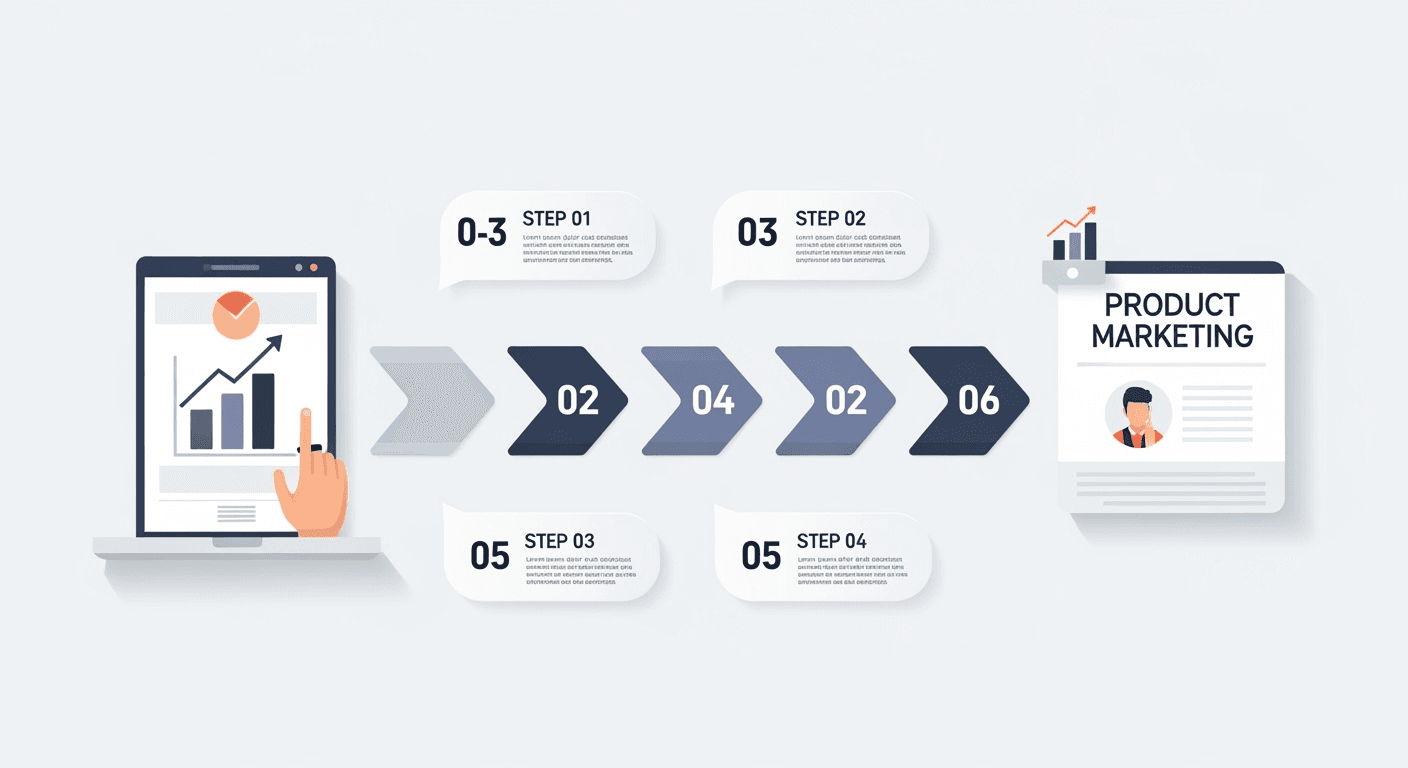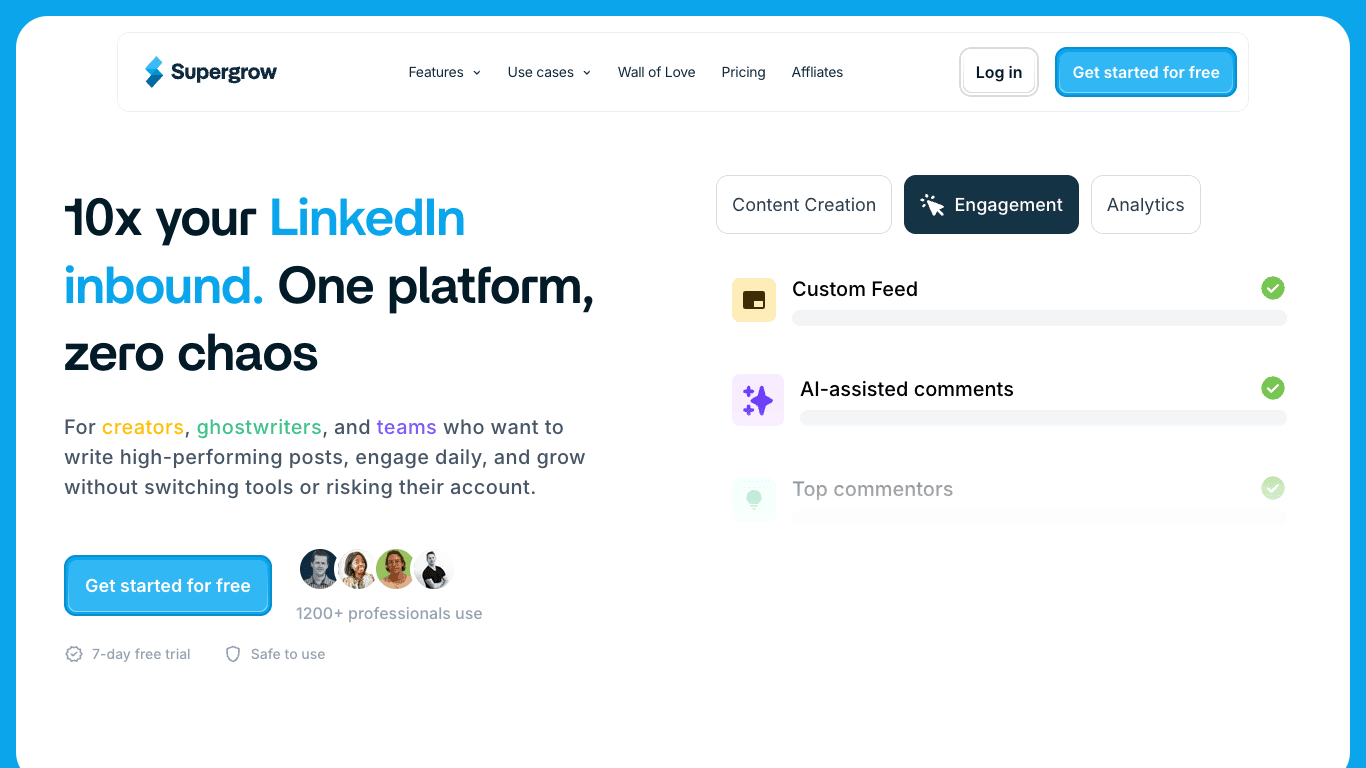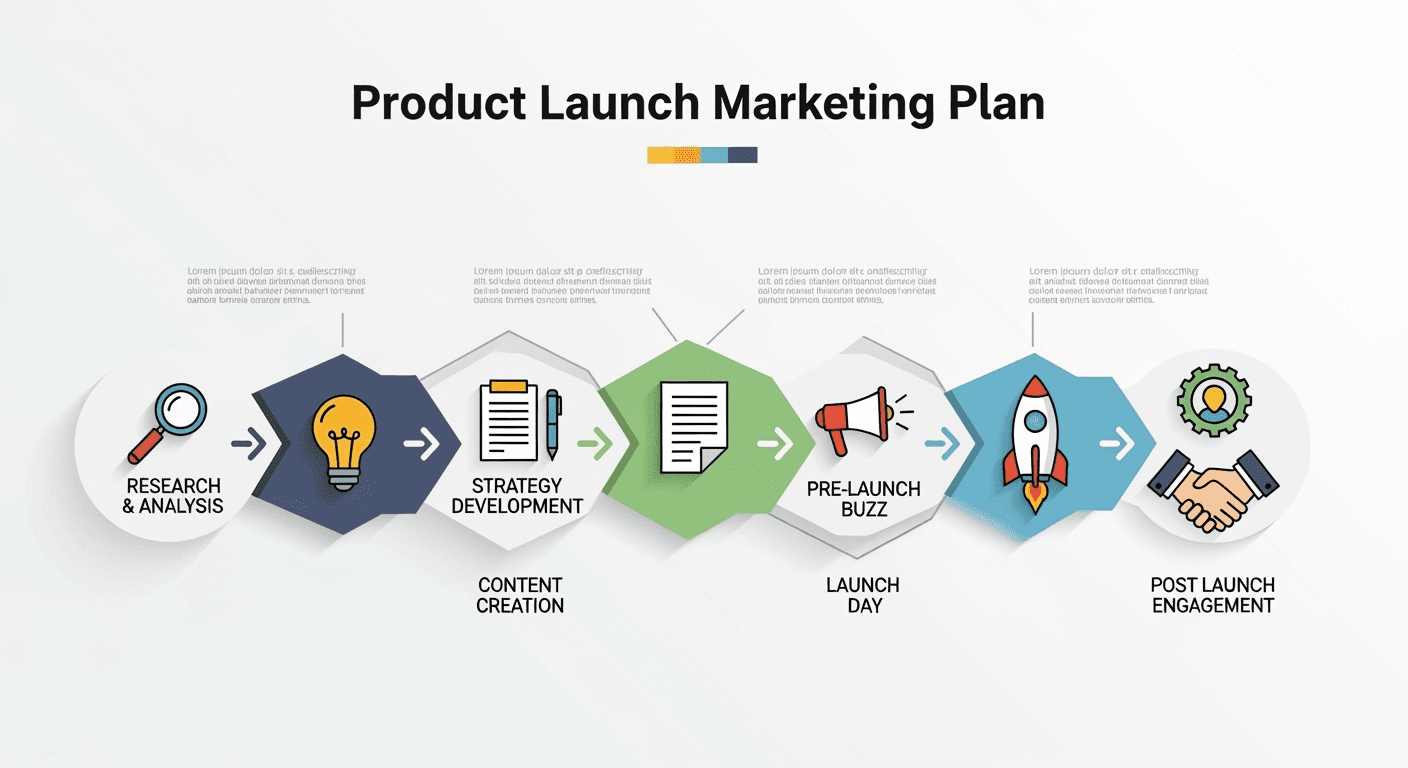Your Foolproof Product Launch Marketing Plan (That Actually Works)
product launch marketing plan: You’ve poured your heart, soul, and probably way too much caffeine into building your product. It’s polished, it’s ready, — learn

You’ve poured your heart, soul, and probably way too much caffeine into building your product. It’s polished, it’s ready, and it’s brilliant. But now comes the scary part: launching it to the world. A vague hope that "if you build it, they will come" is not a strategy; it's a recipe for disaster. What you need is a robust product launch marketing plan.
For indie makers and early-stage founders, the launch phase is terrifying. You likely don't have a massive audience or a hefty marketing budget. How do you get those crucial first users, gather feedback, and start building momentum without breaking the bank? This guide will walk you through creating a powerful product launch marketing plan designed for visibility, validation, and SEO growth, even if you're starting from scratch.
Table of Contents
- Why Your First Launch Feels Impossible (and How to Fix It)
- Phase 1: The Pre-Launch - Building a Runway for Success
- Nailing Your Audience and Messaging
- Creating a "Minimum Viable Audience"
- The Indie Hacker's Secret Weapon: Early Backlinks
- Phase 2: The Launch - Making a Splash Without a Tidal Wave of Cash
- Choosing Your Launchpad
- Content is Your Currency
- Engaging with Early Adopters
- Phase 3: The Post-Launch - Keeping the Momentum Alive
- From Feedback to Flywheel
- Measuring What Truly Matters
- Scaling Your Success
- Conclusion: Your Launch is Just the Beginning
- Recommended Videos
- Frequently Asked Questions (FAQs)

Why Your First Launch Feels Impossible (and How to Fix It)
Let's be honest. The statistics are grim. Some studies suggest a staggering 95% of new products fail. A huge reason for this is a flawed or non-existent marketing strategy. Many builders get so lost in the features and technical details that they forget who they're building for and why those people should care. This is what psychologists call the "curse of knowledge"—you're so close to your product that you can't see it from a customer's perspective.
The core problem for indie builders is a classic chicken-and-egg scenario: you need users to get feedback and traction, but you need traction to get users. Traditional launch platforms can be expensive or require an existing audience, and they often don't help with one of the most critical long-term growth assets: SEO.
This is where a strategic product launch marketing plan comes in. It’s not about a huge budget; it’s about being smart, resourceful, and focused on the right activities at the right time.
Phase 1: The Pre-Launch - Building a Runway for Success
The success of your launch is often decided weeks or even months before you go live. The pre-launch phase is all about building anticipation and creating a small but dedicated group of people who are genuinely excited about what you're building.
Nailing Your Audience and Messaging
Before you write a single line of marketing copy, you need to be crystal clear on two things:
- What problem do you solve for them? Focus on the benefit, not the features. Instead of "5GB of storage," say "Never worry about losing a file again."
Actionable Tip: Create 2-3 detailed "buyer personas." Give them names, jobs, and specific pain points. Every marketing decision you make should be with these people in mind.
Creating a "Minimum Viable Audience"
You don't need thousands of followers to have a successful launch. You need a small, engaged group of early adopters. These are the people who love trying new things and providing feedback. They are your validation engine.
How to find them:
- Niche Communities: Hang out where your target audience lives online. This could be subreddits, Slack groups, Discord servers, or Facebook groups. Participate authentically, offer help, and share your journey.
- Build in Public: Share your progress on platforms like X (formerly Twitter) or LinkedIn. Talk about your wins, your struggles, and what you're learning. This builds trust and attracts people who are invested in your story.
- Create a Simple Landing Page: Before you launch, set up a landing page to collect email addresses. Offer something valuable in return, like early access, a discount, or a helpful resource. This is your waitlist, and it's gold.
The Indie Hacker's Secret Weapon: Early Backlinks
Most people think of SEO as a post-launch activity, but that's a mistake. Building backlinks early can give you a significant advantage. Backlinks are links from other websites to yours, and they are a powerful signal to search engines that your site is credible and valuable.
For a new product, getting backlinks seems impossible. Who would link to a product that doesn't even exist yet? This is where creativity comes in.
- Guest Blogging: Write helpful articles for blogs that your target audience reads.
- Create Valuable Content: Publish original research, a helpful guide, or a free tool that people will want to link to.
- Strategic Outreach: Find websites with broken links and suggest your resource as a replacement.
Platforms designed to connect builders with early adopters can be a game-changer here. For instance, a service like ShipSquad allows you to launch your product to an engaged community and get not just feedback, but also valuable, credible backlinks from the start, tackling the visibility and SEO problem in one go.
Mini Case Study: The Power of Pre-Validation
Noah Kagan, the founder of AppSumo (https://appsumo.com/), is a master of pre-validation. Before building anything, he insists on getting at least three pre-paid customers. This simple rule forces him to validate demand before investing significant time and resources. For one of his ventures, he had an idea for a taco restaurant. Instead of leasing a space, he set up a simple stand at a local event to see if people would actually buy his tacos. This low-cost experiment gave him the real-world data he needed.

Phase 2: The Launch - Making a Splash Without a Tidal Wave of Cash
Launch day is the culmination of all your pre-launch efforts. The goal isn't to be everywhere; it's to be in the right places, making a meaningful impression on your target audience.
Choosing Your Launchpad
Where you launch matters. You want to go where early adopters and your target users congregate.
- Product Hunt (https://www.producthunt.com/): A classic choice for tech products. It can drive significant traffic and attention if you prepare well.

- Niche Communities: Launching directly within a relevant subreddit or online community can be incredibly effective. You're reaching a pre-qualified audience that already trusts the community.
- Your Own Waitlist: Your email list is your most powerful asset. These are people who have explicitly raised their hands to hear from you. Make them feel special with an exclusive launch announcement.
A great product launch marketing plan often involves a multi-platform approach. You might launch on a platform like ShipSquad to secure initial feedback and backlinks, then use that momentum for a bigger launch on Product Hunt a week later.
Content is Your Currency
Since you likely don't have a big ad budget, high-quality content is your best marketing tool.
- Launch Blog Post: Write a detailed post that tells the story behind your product. Why did you build it? Who is it for? How does it solve their problem?
- Demos and Walkthroughs: Create a short video showing your product in action. People want to see how it works before they commit.
- User-Generated Content: Encourage your first users to share their experiences. Feature their testimonials and case studies prominently.
Engaging with Early Adopters
Your first users are more than just customers; they are your co-creators. Their feedback is critical for refining your product and finding product-market fit.
- Be Hyper-Responsive: Answer every question, comment, and email personally and quickly.
- Create a Feedback Loop: Make it incredibly easy for users to report bugs and suggest features. This could be a dedicated email address, a simple form, or a community forum.
- Listen and Act: Show your users that you're listening by implementing their suggestions when it makes sense. This builds incredible loyalty.
Mini Case Study: From Weekend Project to $220K ARR
Deven Bhooshan built SuperGrow (https://supergrow.ai/), an AI tool for LinkedIn content, over a single weekend. He didn't have a big audience or a launch on a major platform. Instead, he focused on getting the tool into the hands of a few key influencers and offering lifetime deals (LTDs) on smaller marketplaces. This strategy generated $65,000 in just two days. The early revenue provided validation, and the feedback from these initial users helped him refine the product into a business now making over $220,000 in annual recurring revenue.

Phase 3: The Post-Launch - Keeping the Momentum Alive
A common mistake is treating the launch as the finish line. In reality, it's the starting pistol. A successful launch is about building momentum that you can sustain and grow over time.
From Feedback to Flywheel
Your post-launch activities should be centered around the feedback you're receiving.
- Collect: Gather feedback from all channels (email, social media, surveys).
- Analyze: Look for patterns. What features are people loving? Where are they getting stuck?
- Iterate: Use these insights to improve your product.
- Communicate: Close the loop. Let your users know that you've implemented their feedback. This creates a powerful flywheel of engagement and loyalty.
Measuring What Truly Matters
It's easy to get caught up in "vanity metrics" like website traffic. Instead, focus on metrics that tell you if you're building a sustainable business.
| Metric Category | Key Metrics to Track | Why It Matters |
|---|---|---|
| Engagement | Activation Rate, Feature Adoption, Daily Active Users | Shows if users are getting real value from your product. |
| Satisfaction | Net Promoter Score (NPS), Customer Satisfaction (CSAT) | Measures user happiness and loyalty. |
| Retention | Customer Churn Rate, Customer Lifetime Value (CLV) | Tells you if you're building a "sticky" product that people continue to use. |
| Acquisition | Customer Acquisition Cost (CAC), Viral Coefficient (K-Factor) | Measures the efficiency and virality of your marketing efforts. |

Scaling Your Success
Once you have a steady stream of happy users and a product that's continuously improving, you can start to scale your marketing efforts.
- Content Marketing: Double down on the content topics that are resonating with your audience.
- Referral Marketing: Encourage your happy customers to spread the word. Referral programs can be incredibly cost-effective.
- SEO: Continue building high-quality backlinks and optimizing your website to attract organic traffic.
Conclusion: Your Launch is Just the Beginning
Creating a successful product launch marketing plan as an indie builder isn't about having a huge budget or a massive following. It's about being strategic, resourceful, and deeply connected to your users. By focusing on a strong pre-launch phase, executing a targeted launch, and relentlessly iterating based on feedback, you can overcome the odds.
The journey from idea to sustainable business is a marathon, not a sprint. Your launch is just the first, crucial step. Stop worrying about a perfect launch and start focusing on building a product that people genuinely love.
Ready to get those critical first eyes on your product, gather feedback, and earn the backlinks you need for long-term growth? Check out ShipSquad — the free platform designed to help indie makers like you launch with confidence.
Recommended Videos
- The Untapped SaaS Launch Strategy That Made Me $65K in 48 Hours
- Go-To-Market Launch Plan For A New SaaS Product
Frequently Asked Questions (FAQs)
1. How far in advance should I start my product launch marketing plan?
For most products, you should begin your pre-launch activities at least 4-8 weeks before your planned launch date. For more complex products, planning can start 6-12 months in advance.
2. What is the most common mistake in a product launch marketing plan?
The biggest mistake is focusing too much on the product's features instead of the customer's problems and the benefits your product provides. Another critical error is neglecting the post-launch phase and failing to maintain momentum.
3. How much should I budget for a product launch?
This varies wildly. A launch can cost anywhere from nearly zero for a resourceful indie hacker to millions of dollars for a major corporation. The key is to focus on low-cost, high-impact activities like content marketing, community engagement, and leveraging free launch platforms.
4. What are the most important metrics to track for a product launch?
In the early stages, focus on engagement and satisfaction metrics like activation rate, feature adoption, and Net Promoter Score (NPS). These tell you if you're on the right track to building a product people love. As you grow, metrics like Customer Acquisition Cost (CAC) and Lifetime Value (LTV) become more important.
5. How can I get backlinks for a brand new product?

6. What's the difference between a pre-launch, launch, and post-launch phase?
- Pre-launch: The period before your product is publicly available. The focus is on market research, building a waitlist, and creating initial buzz.
- Launch: The official release of your product to the public. The focus is on driving initial traffic, acquiring your first users, and being highly responsive.
- Post-launch: The period after your product is live. The focus is on gathering feedback, iterating on the product, retaining users, and scaling marketing efforts.